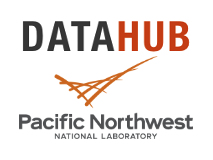The broad range and diversity of interferon-stimulated genes (ISGs) function to induce an antiviral state within the host, impeding viral pathogenesis. While successful respiratory viruses overcome individual ISG effectors, analysis of the global ISG response and subsequent viral antagonism has yet...
Filter results
Category
- (-) Earth System Science (164)
- (-) Human Health (112)
- Scientific Discovery (376)
- Biology (260)
- Integrative Omics (73)
- Microbiome Science (47)
- National Security (32)
- Computational Research (25)
- Computing & Analytics (18)
- Energy Resiliency (13)
- Chemical & Biological Signatures Science (12)
- Weapons of Mass Effect (12)
- Materials Science (11)
- Chemistry (10)
- Data Analytics & Machine Learning (9)
- Computational Mathematics & Statistics (7)
- Data Analytics & Machine Learning (7)
- Renewable Energy (7)
- Atmospheric Science (6)
- Visual Analytics (6)
- Ecosystem Science (5)
- Coastal Science (4)
- Energy Storage (4)
- Solar Energy (4)
- Bioenergy Technologies (3)
- Energy Efficiency (3)
- Plant Science (3)
- Transportation (3)
- Cybersecurity (2)
- Distribution (2)
- Electric Grid Modernization (2)
- Grid Cybersecurity (2)
- Wind Energy (2)
- Advanced Lighting (1)
- Computational Mathematics & Statistics (1)
- Environmental Management (1)
- Federal Buildings (1)
- Geothermal Energy (1)
- Grid Analytics (1)
- Grid Energy Storage (1)
- High-Performance Computing (1)
- Subsurface Science (1)
- Terrestrial Aquatics (1)
- Vehicle Technologies (1)
- Waste Processing (1)
- Water Power (1)
Tags
- Virology (77)
- Immune Response (51)
- Time Sampled Measurement Datasets (51)
- Differential Expression Analysis (46)
- Gene expression profile data (45)
- Homo sapiens (42)
- Mass spectrometry data (31)
- Multi-Omics (30)
- Viruses (27)
- Omics (24)
- Health (23)
- Soil Microbiology (23)
- Virus (23)
- MERS-CoV (19)
- Mus musculus (18)
- sequencing (13)
- West Nile virus (13)
- Genomics (11)
- Influenza A (11)
- Mass Spectrometry (11)
- Metagenomics (10)
- Ebola (9)
- Predictive Phenomics (9)
- High Throughput Sequencing (8)
- Microbiome (8)
- Microarray (7)
- Fungi (6)
- Imaging (6)
- Proteomics (6)
- Resource Metadata (6)
Showing 241 - 255 of 272
Systems biology offers considerable promise in uncovering novel pathways by which viruses and other microbial pathogens interact with host signaling and expression networks to mediate disease severity. In this study, we have developed an unbiased modeling approach to identify new pathways and...
Category
The severe acute respiratory syndrome coronavirus accessory protein ORF6 antagonizes interferon signaling by blocking karyopherin-mediated nuclear import processes. Viral nuclear import antagonists, expressed by several highly pathogenic RNA viruses, likely mediate pleiotropic effects on host gene...
Category
Publication
The Systems Biology for Infectious Diseases Research program was established by the U.S. National Institute of Allergy and Infectious Diseases to investigate host-pathogen interactions at a systems level. This program generated 47 transcriptomic and proteomic datasets from 30 studies that...
Category
Respiratory infections stemming from influenza viruses and the Severe Acute Respiratory Syndrome corona virus (SARS-CoV) represent a serious public health threat as emerging pandemics. Despite efforts to identify the critical interactions of these viruses with host machinery, the key regulatory...
Category
The Community Land Model (CLM) is an effective tool to simulate the biophysical and biogeochemical processes and their interactions with the atmosphere. Although CLM Version 5 (CLM5) constitutes various updates in these processes, its performance in simulating energy, water and carbon cycles over...
Category
Last updated on 2024-02-11T22:41:43+00:00 by LN Anderson PNNL DataHub NIAID Program Project: Modeling Host Responses to Understand Severe Human Virus Infections, Multi-Omic Viral Dataset Catalog Collection Background The National Institute of Allergy and Infectious Diseases (NIAID) "Modeling Host...
Category
Datasets
45
Publication
Both highly pathogenic avian influenza virus and Middle East respiratory syndrome coronavirus (MERS-CoV) infections are characterized by severe disease and high mortality. The continued threat of their emergence from zoonotic populations underscores an important need to understand the dynamics of...
Category
The pathogenesis of human Ebola virus disease (EVD) is complex. EVD is characterized by high levels of virus replication and dissemination, dysregulated immune responses, extensive virus- and host-mediated tissue damage, and disordered coagulation. To clarify how host responses contribute to EVD...
Category
Person
Dr. Katrina Waters is the division director for Biological Sciences at the Pacific Northwest National Laboratory. Waters has a Ph.D. in biochemistry and more than 15 years of experience in microarray and proteomics data analysis. Her research interests are focused on the integration of genomics...
Category
Person
Earth Scientist Emily Graham is an quantitative ecosystem ecologist in the Biological Sciences Group at PNNL and is part of the Ecosystem Science Team. She is co-principal investigator of the Subsurface Biogeochemical Research Science Focus Area (SFA) and a key member of PNNL’s soil microbiome SFA...
Category
Publication
The novel fungal strain, Fusarium sp. DS 682, was isolated from the rhizosphere of the perennial grass, Bouteloua gracilis , at the Konza Prairie Biological Station in Kansas. This fungal strain is common across North American grasslands and is resilient to environmental fluctuations. The draft...
Category
Coastal landscapes are increasingly exposed to seawater due to sea level rise and extreme weather events. The biogeochemical responses of these vulnerable ecosystems are poorly understood, limiting our ability to predict how their role in global biogeochemical cycles will shift under future...
Category
Datasets
1
The soil microbiome is central to the cycling of carbon and other nutrients and to the promotion of plant growth. Despite its importance, analysis of the soil microbiome is difficult due to its sheer complexity, with thousands of interacting species. Here, we reduced this complexity by developing...
Category
As part of the Pacific Northwest National Laboratory’s (PNNL) Science Focus Area program, we are investigating the impact of environmental change on microbial community function in grassland soils. Three grassland soils, representing different moisture regimes, were selected for ultra-deep...



